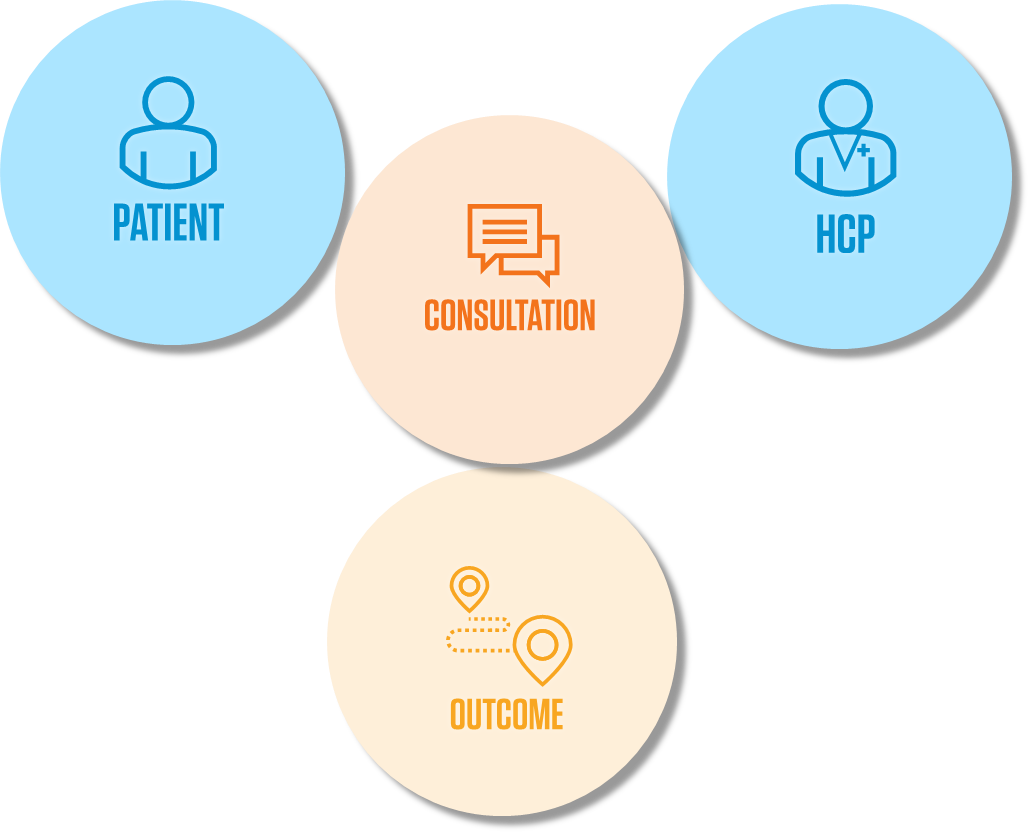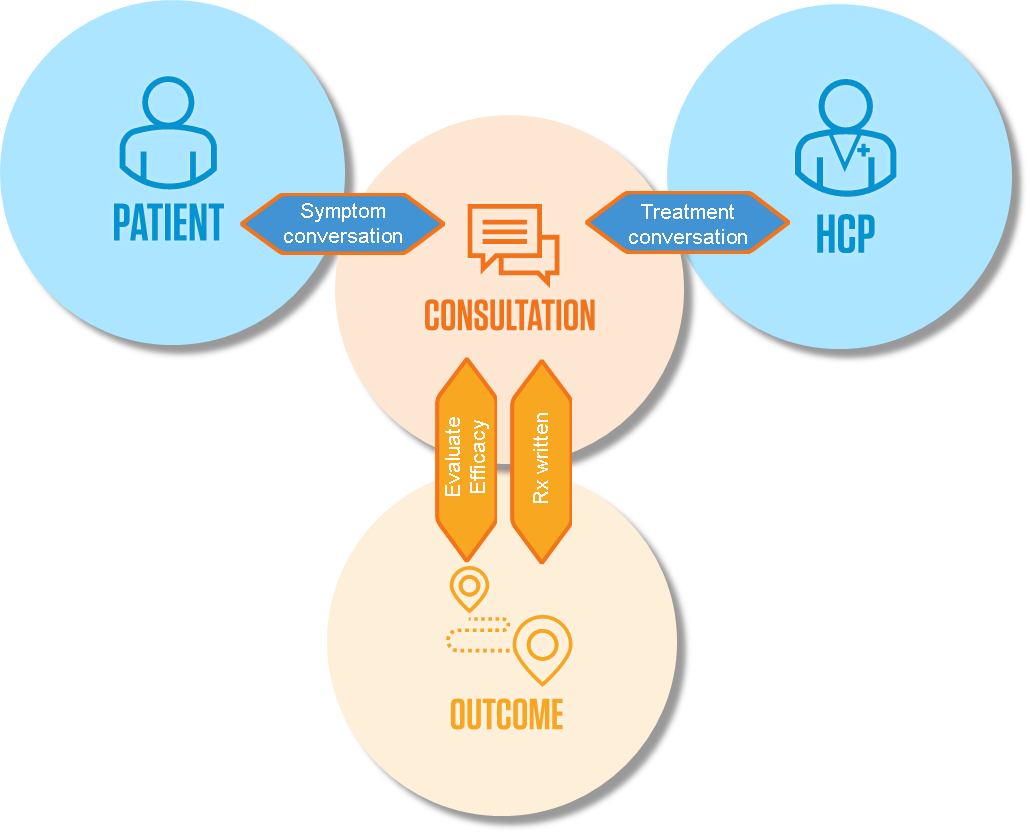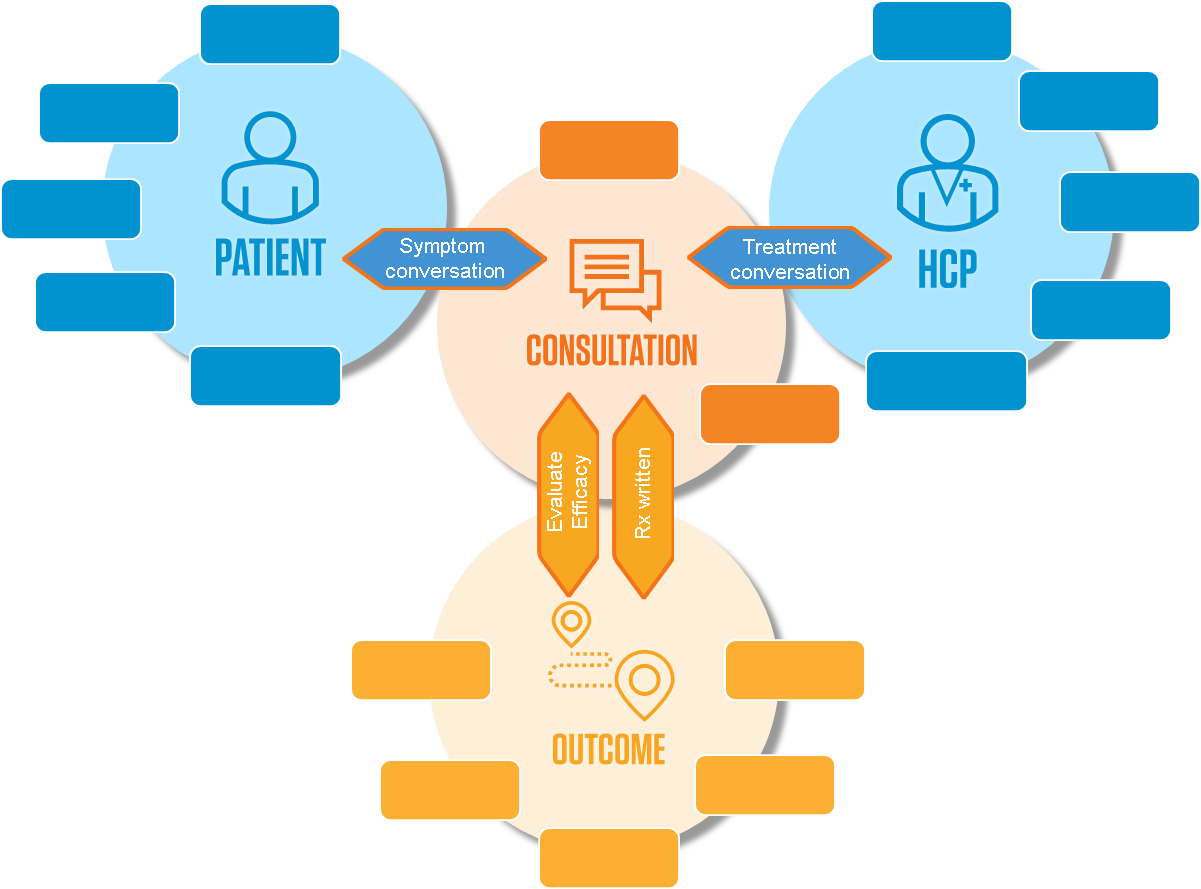The space in which patients and HCPs navigate while making treatment decisions is complex and intertwined. Yet, brands often plan patient and HCP marketing efforts in silos. The goal is to encourage positive patient and HCP conversations and the hope is each individual team’s efforts lead to a dialogue. But hope is not a strategy.
To ensure that the correct conversations are happening in-office, it is important to understand how patients and HCPs learn about conditions and treatment options. Therefore, understanding each stakeholder’s treatment journey and where they intersect becomes important to unlocking insight into that process.
The trouble is, current journey mapping models are incomplete. Most are CPG-focused, with an emphasis on the consumer. The HCP’s role in the journey is diminished, if not completely absent. They also tend to be linear, with a finite start and end. We know that in the healthcare space treatment is often more complex, and in many cases a cure is not realistic. Instead we aim to manage symptoms. Finally, many of these models are built on generating interest and desire among a target audience, terminology that is insensitive to a patient with a serious condition.
To better assess how both patients and HCPs navigate the treatment journey, Butler/Till Health Group developed a new treatment journey model.
Fundamental Aspects of the BTHG Journey Model
When we set out to develop a new patient and HCP journey model, a few key concepts that we wanted to address were:
- A complete picture of the treatment journey includes both patients and healthcare professionals.
- It is important to be able to empathize with the patient. Understand the most important moments / what they need at that time / help identify whitespace.
- Journeys are not linear, and “steps” in the process can change from one condition to another.
- For the healthcare industry, conversion is so much more than a “purchase.”
- Outcomes (both positive and negative) need to be addressed.
Our first step was to identify the main spheres of condition/treatment discovery and how they intersect. We identified them as Patient, HCP, Consultation, and Outcome. For the purposes of this writeup, we will examine the journey from the perspective of a Rx brand, but this model could be used to address medical equipment or devices as well.
- Patient: Represents the patient’s journey from the moment they first begin to recognize symptoms to when they ultimately decide to seek help from a HCP.
- HCP: Represents the HCP’s journey in which they learn about conditions and treatment options that they bring to the treatment conversations.
- Consultation: The phase in which Patients present symptoms, and HCPs offer diagnosis and treatment options.
- Outcome: Once a treatment is selected, the outcome phase represents all the steps the Patient takes while on treatment.
From there we wanted to identify the key interaction points between each sphere. In this example, we identified them as:
- Symptom conversation: The patient is presenting symptoms to the HCP during the Consultation phase.
- Treatment conversation: The HCP is presenting treatment options in the Consultation phase.
- Rx Written: The HCP writes a Rx for the Patient, sending them to the Outcomes phase.
- Evaluate Efficacy: Upon completing the first treatment cycle, the Patient and HCP regroup in the Consultation phase to discuss efficacy.
From there we would look to identify the major steps in the journey within each sphere. It is important to note that these steps will vary by condition. The number of steps within each sphere may differ. Additionally, it is important to understand that not all stakeholders will navigate the journey in the same way. It is possible that some steps may be skipped. Our goal here is to identify the most common path, knowing that it is not absolute.
Once each step has been identified, we then conduct a deep dive to understand needs, behaviors, effort, and time spent within each to uncover opportunities for the brand to create meaningful interactions with patients and HCPs. Each stage is a potential communications opportunity with messaging implications.
This approach has allowed us to gain a better and more complete understanding of the entire treatment journey, inclusive of both the patient and HCP, and uncover new ways for brands to interact by identifying key communication opportunities.
The Butler/Till Health Group is already employing this new model towards campaign planning initiatives with our current clients and it’s proving to be helpful even in ways we hadn’t initially conceived. For instance, our creative agency partners have found it incredibly useful for mapping out messaging considerations—what do we want to say and how do we engage at every single media touchpoint with the brand? What’s the opportunity to satisfy patient/HCP needs and how can we plan for that? When we use this as a planning roadmap it becomes clear that it has value beyond just as a media planning tool.









